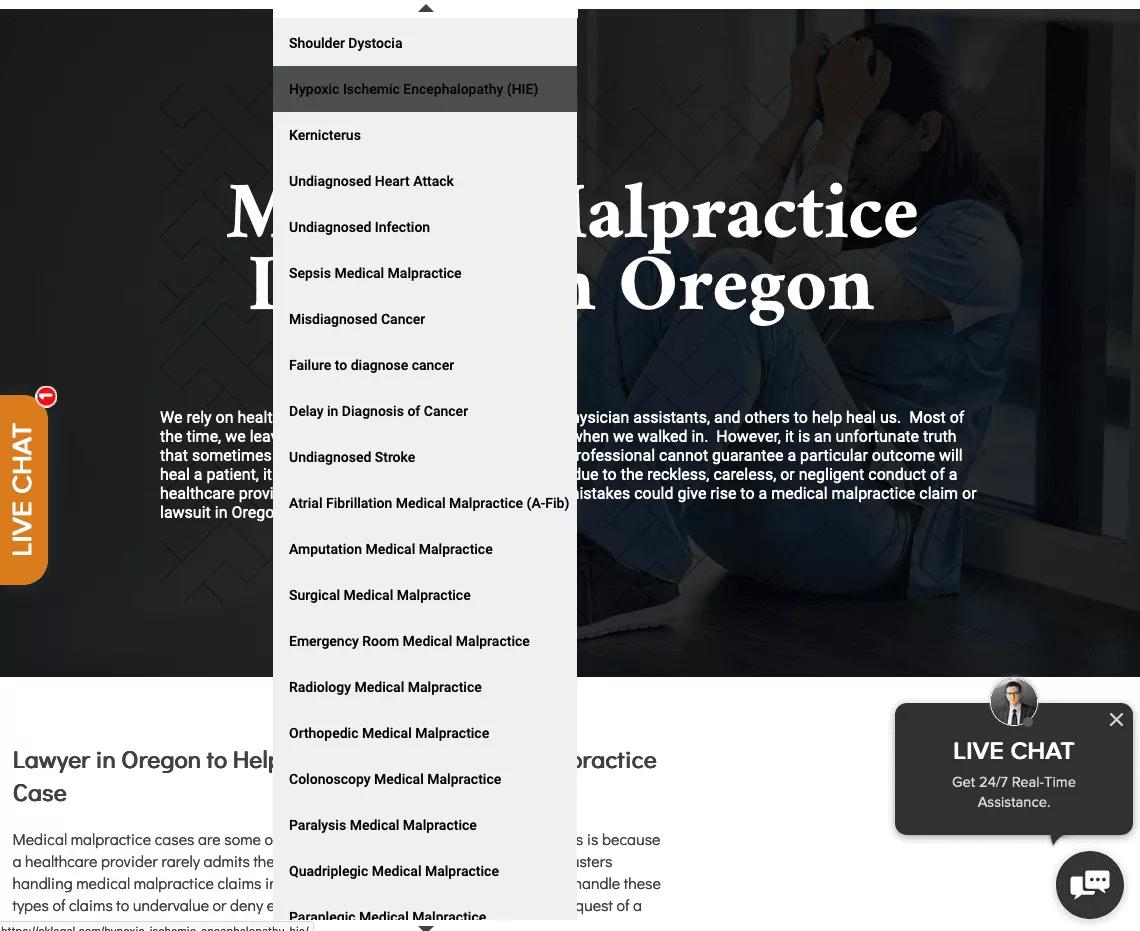
, author: Claudia TödtmannExcerpt from Claudia Schieblon's 3rd new edition "Marketing for law firms and auditors": "Online marketing" by Armin Heßler and Petra Mosebach. Claudia Schieblon, Professional Management Network PMNDespite the very personal and demanding services that auditors, tax consultants and lawyers offer, these professional groups are increasingly being searched for and found via the Internet. Google Keyword Tools measures the number of corresponding search term entries per month as follows: • Tax consultant 1,000,000 • Auditor 201,000 • Lawyer 2,740,000.Orders for four billion euros through the Internet. These figures do not take into account inquiries about specific keywords, such as the preparation of annual financial statements, company valuations or traffic law. If such search word entries were included, the numbers should roughly double. Even if in the end only a fraction of the inquiries lead to orders, it becomes clear what potential the Internet also offers for these professional groups. According to our estimates, orders worth around four billion euros are awarded every year, in which the Internet has played a part in the decision-making process. Homepage, Facebook page, e-mail marketing and online advertising. Online marketing is diverse. Your own website is mandatory. Without search engine optimization, however, this is rarely found. More and more law firms also maintain pages in social media networks. Passively waiting for visitors to the website is not enough, so active measures such as e-mail marketing or paid online advertising are important additions to online marketing. If you then also think of good usability and accessibility, you can improve your success considerably. A correspondingly comprehensive and well thought-out website is usually not available at a low price and has to pay off through additional orders and satisfied clients. In order to measure whether the desired goals are being achieved, the instruments of web controlling and web analytics are available....Forms of online marketing.Active and passive media.From the point of view of the law firm, media communication can be operated actively and passively. In online marketing, the terms “push” and “pull” are also used for this distinction. In the passive variant, the law firm simply provides data and content. The need for information is controlled by the user, who obtains the information he is looking for from an information pool (pull). For effective marketing, it is not enough to wait for interested parties. Rather, potential interested parties must be provided with information (push) before they possibly obtain it elsewhere. Active communication is advisable, especially for needs that have to be awakened first. From a service point of view, too, there is a lot to be said for pushing information instead of just providing it passively. Newsletters and e-mails. Websites and blogs are passive media by nature. Among the active media, e-mail is of great importance. It not only transports information, but is often linked to newsletters for marketing purposes and used to distribute them. Social media networks can also be understood as active media. The fact that smartphones are now being used almost everywhere to communicate with social media networks means that users are constantly informed about new incoming messages. RSS 2 provides particularly sophisticated technology. This makes it possible to transform the passive website and blog into an active medium. If changing content, such as event information, news from the law firm or news from case law, is created in RSS format, clients and interested parties can subscribe to this via Outlook, a browser or on their smartphone have duplicated, your own company website remains the focus and most important component. A major reason for this is the complete control over content and appearance - two important features that can only be determined to a limited extent on platforms such as Xing, Facebook or Twitter. The content of the website and its functionality are hardly available with today's technical possibilities still set limits. The simplest and increasingly rare variant is the pure presentation of content. Websites are increasingly being supplemented with forums, blogs or even community functionalities, so that they come close to being a social media platform. Fillable forms, embedded programs or interactive services such as route planners,turn the website into a jack of all trades..Landing page. A landing page or landing page is the entry page for a specific topic. The homepage or entry page of the company website is often the only landing page. Here visitors are greeted in a friendly manner and invited to look at more content. However, many visitors do not end up on the homepage at all because they came to the website via a search engine or an external link. And these link to the subpage where the searched keyword can be found. This should be taken into account when designing a website. Certain information should be placed in the so-called header (above), footer (below) or in a sidebar (on the side) so that it appears in the same place on every subpage of the website. This information includes contact details and action buttons, for example requesting a callback, requesting an appointment. If targeted advertising campaigns are carried out, such as the placement of Google Adwords ads, entries in thematic directories (e.g. directory of service providers for doctors) or e-mailings, simply naming the domain applies -Address too short. The visitor would be directed to the law firm's homepage. But if he gets there, for example, via an advertisement that refers to the medical law competence of the law firm, he is very likely to have been interested in exactly this topic. He was attracted by the ad's promise of additional information on his specific question. He should now be able to find these directly where he is directed. Otherwise, there is a high risk of a quick jump. Due to the endless – and therefore time-consuming – abundance of information and possibilities on the Internet, Internet users are proven to be impatient contemporaries. Few bother to click through menus and submenus to find what they expect. Setting up a landing page specially created for the advertising campaign can help here. The link is made directly to this page, which serves exactly the information required as promised in the ad. The chance of increasing the visitor's length of stay so that he is also interested in the originator of the information and what he has to offer increases many times over. Usability and accessibility. There are a number of pitfalls that visitors to the website can unintentionally annoy: gray text on a black background, flashing boxes, incomprehensible menu items, page structures that are too flat or too deep, and much more. Not everything that one considers chic is of use to the visitor. He doesn't like everything that's modern. Above all, however, potential customers are deterred if the site is complicated to use or if the information they are looking for is difficult to find. Essential: testing the homepage. Testing the usability of a site can be time-consuming and expensive. A lot is often gained if you let a few employees surf the site for an hour and solve the tasks you have set. Most of the problems should then be known and can be eliminated. In general, it is recommended to stick to common standards. For example, the search bar is found on most websites at the top right, giving the user an association that subconsciously directs their gaze there in fractions of a second. If you place your search bar in the bottom left for aesthetic or creative reasons, you could unnecessarily confuse your visitors. If such subconscious impressions accumulate in the user, the page is felt to be more difficult to use than what is usual. In the worst case, irritability and resentment arise. The site is visited less often, even if the user cannot necessarily name the reasons for this. The logic of the law firm's structure is not the yardstick. The site and menu structure often follows the internal logic. The visitor only needs and wants to know in the rarest of cases which departments the law firm has and how the division of responsibilities is planned. He usually has a content-related information requirement. The structure of the website should therefore be as simple and self-explanatory as possible and viewed from the perspective of potential clients. Above all, you should be able to easily get to any point on the website from sub-menus without having to click back several times. Each unsuccessful click increases the risk of termination..Accessibility.Accessibility means unrestricted access for disabled people to the Internet. Complete accessibility is hardly achievable. However, with little knowledge, the most important barriers can be removed. Visually impaired people are able toread websites with the help of a screen reader, as long as they consist of text. However, if images are used not only for illustration but also for navigation, it is almost impossible for the visually impaired to navigate the site. In practice, this happens more often than you might think. Many texts, especially headings, are not stored as text files but as image files. The reason is the office-specific font, which is supposed to be used but is supposedly not available on the internet. The consequence would be the automatic replacement with an available font and thus usually an ugly distortion on the user's screen. In fact, numerous web services today offer the possibility of using every conceivable typeface on the Internet. Images or symbols are often used for navigation because this increases clarity. In terms of accessibility, however, additional labeling should be reconsidered. Many measures that make it easier for disabled people to use the website are also useful for non-disabled people. This includes clear contrasts, no flashing or animated texts, legible fonts, a uniform navigation structure and the use of the specified heading structures. Therefore, the question of the return on investment is appropriate. This could consist in generating new orders, acquiring new clients and strengthening existing client relationships. Every website should be geared towards these global goals. Conversion means getting the visitor to the website to take an action that directly or indirectly serves the set goals. In practice, it will rarely happen that an order to an auditor, tax consultant or lawyer is triggered directly on the website. The immediate conversion goals must therefore be defined differently. For this, actions should be selected that support the law firm in achieving its global goals. Examples could be: • Registration for an information event • Subscribe to blog posts as an RSS feed • Order a newsletter • Request an offer • Download a form or a sample • Download a power of attorney • Request an appointment different models on the basis of which conversion optimization can take place. The best known is the AIDA model (attract attention, create interest, arouse desire, encourage action). One of the most important thought leaders in the field of conversion optimization, André Morys, has further developed this system and names seven levels of conversion: • Level 1 relevance• Level 2 trust• Level 3 orientation• Level 4 stimulation• Level 5 security• Level 6 comfort• Level 7 Evaluation. At each individual level, it is decided again whether the interested party enters the next level or jumps off. The better the conversion path is set up, the lower the bounce rate and the higher the conversion rate. The individual levels will be explained using the example of Sabine S., who is looking for a divorce attorney. The request for an appointment is defined as the conversion goal. Sabine S. will consider a website relevant if she finds the keywords “lawyer”, “divorce law” and “maintenance law” within seconds. Otherwise she will leave the site and the law firm behind her will lose her as an interested party or client. Sabine S. will gain trust if she thinks the website gives a serious impression. This starts with the look of the website (colors, images, font, design), includes the type of presentation (people, services) and also the reference to the affiliation to the bar association and association. The obligatory reference to the professional supervision in the imprint is not only mandatory, but also helpful. However, additional images of the respective logos would be better, for example in the footer on every page. The website should help users - not scare them off with technical terms. The trust that comes from external sources must be supplemented by internal competence. The content of the website must convey the conviction that the law firm behind it can solve Sabine S.'s problem. This is created by appropriately designed information that is aimed at the person seeking advice and their current problem. A legally flawless text with precise technical terms could be insufficient for this. If the visitor does not feel personally addressed, this could tempt them to leave.Sabine S. finds orientation on the website if the navigation meets her expectations. Interdisciplinary law firms in particular should carefully ensure that a common thread guides visitors through their area of interest. It is important that you don't have to click back to the homepage after each subpage to view more content on other subpages. Instead, the common thread should emerge from the respective subpage itself. You could stimulate Sabine S., for example, with tools for calculating alimony, with an overview of the typical process of a divorce or with a checklist of the measures that she has to initiate. but the most important conditions are presented in an understandable and legible form. The indication of whether and how much there will be costs for the first meeting also contributes to security and could bring the interested party closer to the conversion goal of asking for an appointment. if the website is clearly designed and easy to use. If she wants to get in touch now, the law firm shouldn't trust her to look up the phone number on the contact page and call her, or torment herself with a confusing form. If, on the other hand, a well-designed, simple form is offered that only asks for the most necessary data and in which the subject, namely the desired date, is already preset, the probability of the request increases. Before Sabine S. presses the "Send" button, she becomes an implicit evaluation before-take. Do the website and the content presented meet my expectations? Will I really receive the best possible care from this law firm? If she can answer the questions with "yes", she will send the request. From the point of view of the law firm, this hurdle is not easy to overcome. Expectations are as varied as the visitors to the website. It is therefore important to know your target group and their expectations. If you want to address the broadest possible audience, you may not be able to satisfy anyone in the end. Once Sabine S. has gone through all seven stages and sent the appointment request, the website's conversion goal has been reached. From now on, the personal persuasiveness of the office owner is required to turn a website visitor into a client. Local Marketing. Offers from auditors, tax consultants and lawyers are primarily in demand locally. The location of the provider is only irrelevant for very special services or large clients. Even the large companies are targeting regional markets, as their numerous branches show. The search engine Google, which has an almost monopoly position, provides its own result format for certain search terms such as "tax consultant" and "lawyer". A block of up to seven websites relating to local providers is inserted within the first ten search results. This block presents the results so favorably that the other links found are subordinate. Google is thus accommodating the search behavior of many Internet users who supplement certain search queries with a local filter, such as "Frankfurt tax consultant". 4 can be localized. However, this does not work if, for example, an employee of the Munich branch of a Hamburg company surfs the Internet via the company network and this identifies itself for all branches via a Hamburg IP number block in the network. If you want to know which one IP number you are surfing the web, you can check this at http://www.utrace.de/. In order to promote local marketing, Google makes the "Local" area available on its social network platform Google+ . If you want to get into the coveted block of 7, you should not only maintain an active page on Google+ Local, but also register in as many online directories with local reference as possible. For this purpose, a fixed process should be installed in the law firm, which ensures constant updating. In view of the massive competition on the Internet, this is not easy to achieve. If the website does not manage to get to the first page of the result list in a search engine query, it has little chance ofbeing noticed by potential prospects.. Our investigation of numerous law firm homepages revealed that in many cases little is done to improve the position on the search results list. Anyone who has hardly bothered about this topic until now should implement the basic measures described below as a first step. Set keywords. First you have to ask which search word (keyword) you would like to be found with. For lawyers, this could be, for example, divorce , inheritance law , company law or non-competition clauses. Tax consultants could, for example, choose the keywords tax return, corporation tax, accounting, auditors the keywords annual audit, audit, company valuation. The terms tax consultant and auditor themselves are good and popular keywords, while lawyer should only gain importance in connection with an additional keyword due to the expected and sought-after specialization. A keyword, a subpage - no technical terms as a keyword are to be carefully ensured that a separate sub-page is used for each keyword. A mixture of several keywords on a subpage does not bring the desired success. When aligning the pages to the selected search terms, care should be taken to ensure optimal keyword density. About 3% to 5% is recommended. This means that a text with a total of 200 words should contain the keyword for which the page is to be optimized six to ten times. The keywords should be selected from the perspective of the searcher. Very few Internet users search for precise technical terms. Colloquial words are more often entered into the search slot of the search engine. The motto "a lot helps a lot" is out of place in keyword optimization. This applies both to an unnatural accumulation of keywords in a text - Google is excellent at text analysis - and to the indiscriminate addition of any number of keywords, so-called keyword stuffing. Numerous tools are available for keyword optimization, above all the Google Keyword Tool. Although this tool is primarily intended to improve Google Adwords ads, it can also be used for keyword optimization. The search engine primarily evaluates the content of the website. However, the web address contributes significantly to the weighting. When searching for the keyword "tax consultant", the website www.steuerberater-meier.de has a better chance of being placed at the top of the list than a website with the address www.meierundpartner.de. The latter poses another problem: search engines don't bother isolating the terms Meier and Partner from the address. Inserting hyphens would help. Web addresses that contain a keyword are often bulky and do not correspond to the communicated brand. For example, the law firm ABCD, a law firm specializing in family law in Frankfurt am Main, would like to use the web address www.abcd.de. However, it is known that the address www.rechtsanwalt-familienrecht.de would be more favorable for search engines. Redirects as a vehicle. The conflict of interest can be resolved by using both addresses. The subdomain abcd.rechtsanwalt-familienrecht.de is created under the domain Rechtsanwalt-familienrecht.de. The website is set up with the desired content under this. The web address www.abcd.de, on the other hand, has no content of its own, it does not lead to its own website, but is redirected to abcd.rechtsanwalt-familienrecht.de. although this is managed under the more search engine-friendly domain Rechtsanwalt-familienrecht.de. The searcher who does not know the name of the law firm and only enters the key words "lawyer" and "family law" is just as successful. Another effect also comes into play: using the subdomain abcd instead of www creates a recognition effect. This avoids confusion among interested parties who have searched for "abcd", because as a result of the redirection, they will not see www.abcd.de in their browser, but the destination address of the redirection. Redirecting a web address only works from the perspective of search engine optimization in the direction described. If you set up the website at www.abcd.de instead, leave www.rechtsanwalt-familienrecht.de without its own content and redirect it to www.abcd.de, you will not achieve the desired goal.If you entered the keywords “lawyer” and “family law”, the search engine would not list the address www.rechtsanwalt-familienrecht.de in the list of results because it would not find any content under it publishing both addresses brings no advantages. Google recognizes duplicate content (double content) and penalizes the page with a demotion in the list of results. Whether you place more than two keywords in the web address is not just a matter of taste. Google could also be bothered by this and assume keyword stuffing. With all keyword optimization, you should make sure that the seriousness is maintained. In this case, less is more.. File designation. Each page of the website, regardless of whether it is the entry page (homepage), imprint or any content page, represents a file and is given its own designation. If different services are offered, they can be identified with service1.htm, service2.htmusw. be referred to or better with Erbrecht.htm , Gesellschaftsrecht.htm or Jahresschlusspruefung.htm . If an interested party from Frankfurt is looking for the keywords "lawyer inheritance law", the page abcd.rechtsanwalt-familienrecht-in-frankfurt.de/erbrecht has good chances, way ahead to end up in the results list.. The same applies to all other elements of the website. Each image should be labeled clearly and keyword-optimized. In addition, the "Alt Tag" should be filled in, which is displayed if the image cannot be loaded. Links that refer to other internal sources should not be marked with " Please click here ". If the sub-page linked here is to be optimized, for example, for assessing assets when equalizing gains, the following link text would be appropriate: “... please read the article on assessing assets when equalizing gains. “.Page title.The page title is different from the file name. It becomes part of the markup language (HTML) and with the so-called meta tag < title > excellent. The page title should not exceed 65 characters and should always contain the keyword for which the page is optimized. As a user, you don't have to deal with HTML. The user interface offered to you by the web agency asks for a title for the page to be created and converts the input into the appropriate code. Headings. For a better overview, texts usually contain hierarchical headings. This principle should also be observed for web texts. Because texts are perceived to be less readable on screens, web texts should be broken down more finely than texts on paper. From the perspective of search engine optimization, it is important whether headings are only formatted so that the reader can recognize them as such, or whether they can also be interpreted as headings by the search engine. HTML provides the tags < h1 > , < h2 > , … < h6 > available. These should definitely be used, although the system also makes this work easier for you. In particular, the contents of < h1 > and < h2 > are evaluated by search engines. These should always contain the keyword for which the respective sub-page has been optimized. The aim here is to convince operators of other websites to create a link to your homepage or another page on your website. The search engine assumes that a page is all the more important the more it is linked from other pages. This fact has given rise to an entire industry whose most important business model is the provision of links, which is subject to a fee. However, unless these websites have any other use than such links, be warned. Google and Co. recognize such websites and not only do not evaluate links from them, but even negatively. These restrictions do not apply to reputable directories that provide real assistance to searchers. The best way to get links is through good articles. Also, don't be afraid to ask your clients to put a link on their website. Of course, professional law limits must be observed. In our opinion, there is nothing wrong with a client objectively pointing out who their auditor is on their homepage and linking to their website. However, due to the public function of a final examination, advertising statements should definitely be avoided. Search results page.Many optimization measures end with the goal of reaching the first search results page and ranking as high as possible there. Skilled service providers will always succeed in giving a website top positions. To do this, you simply have to find a keyword combination that fits the business model to some extent. The optimizer often doesn't tell you that this keyword combination is rarely used in search queries. But even if the website is listed at the top of the list for frequently occurring search queries, it has to hold its own against the competition from the other listed results. The typical result of a search query consists of four lines, with the first line in blue showing the page title. The website owner sets this with the < title > -Day fixed. The second - green - line contains the address of the found website. The following lines 3 and 4 show a section of the found page (snippet), which should already give the searcher an insight into the content. Just like the page title, this section can also be influenced. HTML provides the meta tag < description > available. In practice, it can often be observed that neither the page title nor the snippet have been optimized. Such a page achieves significantly fewer clicks than an optimized website Avoidance of costly wastage. Advanced monitoring and tracking technologies allow users to only be presented with ads that may interest them.The main forms of paid online advertising are outlined below. Advertising, also known as keyword advertising, is named by Google AdWords. AdWords ads are generated without any noticeable delay to match the search query. Advertisers use a relatively simple procedure to determine the search context in which their ads should be displayed. An advertisement to be placed could be marked with the search terms "tax consultant, bookkeeping, accounting, accounting, tax return, corporation tax, annual financial statements, tax office". If an interested party now searches for the terms "tax consultant annual financial statements", the ad will be included in the selection of advertisements to be displayed. Whether and where the ad is actually listed depends on the competition, the daily budget specified and the amount of the bid for one click. Optimized display in the search result list. If a competitor is willing to pay one euro for a click, while you only want to spend 80 cents yourself, the competitor will be further ahead. However, with its sophisticated system, Google makes sure that the daily budget of ten euros, for example, is used up. Every now and then an ad with a lower click price is listed higher up in order to get as many clicks as necessary until the budget is exhausted. When used correctly, search engine advertising can be very successful. If, on the other hand, a Munich tax consultant receives clicks from a prospective customer in Hamburg or a divorce lawyer from someone seeking advice on traffic matters, the clicks only cost money without being of any use. Similarly, if someone is looking for specific advice, but the link in the ad directs them to the general home page. Very few interested parties spend time searching for the desired information on a complex page. After all, the next alternative is just a back click away. So if you don't want to squander your advertising budget, you should think carefully and get expert advice. Display network. The display network, which is maintained by the search engine operators, is closely related to search engine advertising . Here, ads are placed on thematically appropriate pages. For example, if an article on a new double taxation agreement is published on a high-traffic business news site, appropriately configured ads from tax consulting firms will be displayed if they are tagged with the appropriate keyword. Affiliate Marketing. Affiliate marketing is a further development of existing online forms of advertising. Unlike there, the simple display (impression) or click is not offered as a paid service, but the mediation of a specific service.Affiliate marketing is most common for standard products such as books, music carriers or clothing. For example, an article about trekking in the Andes could contain links to suitable product pages from an online retailer for trekking equipment and outdoor clothing. In addition, advertisements for relevant travel literature and travel agencies could be placed. If one of these links leads to a sales transaction, the website or blog operator on whose site the article appeared (affiliate) receives a brokerage fee. The advantage over conventional online advertising is that you don't have to pay per click, but only when a transaction is successful. From the point of view of auditors, tax consultants and lawyers, this type of mediation-oriented advertising seems difficult. Professional legal concerns and the question of seriousness could oppose this. Above all, however, it is rather unlikely that a complex personal service will come about by clicking on a link. Even in the best-case scenario, there will be a few intermediate steps between clicking and placing the order, over which the affiliate has no influence and which he cannot understand using technical means. It is therefore not possible to measure success, after which he is entitled to his agency fee. However, if goals are defined for the occurrence of the agency fee, which typically precede the conclusion of a contract, affiliate marketing can also be of interest to law firms. For example, a commission could be offered for the mediation of subscribers to the law firm's newsletter. Paid content. There are a number of bloggers whose business model consists of creating content and publishing it on their blog site for a fee . There is no objection to this if such articles are marked accordingly. Some publishers offer similar services on their websites. There is no general answer as to whether you should write the content yourself or have it created by the service provider. This depends on the skills and capacities on both sides. When making a decision, you should consider that the content provider often knows their readers better and can design the articles in such a way that they are optimally received. This form of online advertising can be interesting if target groups in specific niches are to be addressed. If service providers have good access to the target group, paid content can have a large leverage effect. Remuneration models. Individual remuneration models have already been mentioned above. For a better overview, the most important ones should be presented here.. Auction models. Auction models are mainly used by search engines. The advertiser selects any number of search terms for which his advert is to appear and places a bid for each on how much he is willing to pay when the searcher clicks on his advert who submitted the highest bid for the searched keyword. As a rule, the advertiser specifies a daily budget that he does not want to exceed. This ensures that expenses can be controlled. The fee to the search engine operator is due when the Internet user clicks on the ad (per click). From the search engine operator's point of view, the budget is sales potential. He will try to exploit this potential by placing the ad. This way, the ad may occasionally show up even if it didn't have the highest bid for the keyword you were looking for.Price per click.Unlike auction models, click-only models come with a fixed click price. Since this is not controlled by supply and demand, there is a risk of paying too high a price for a possibly inferior click. Price per display. Payment is made for each display of the ad, regardless of whether the Internet user saw it at all. The well-known "advertising blindness" is one reason why impressions cause only a tiny fraction of the cost of a click. Whether one click or a thousand impressions is better also depends on the quality of the ad. It is usually recommended to give priority to click-oriented remuneration models.Price per leadThis form of remuneration is typical for affiliate marketing. Here, each mediation is remunerated with a predetermined share of the sales price. If the mediation goal is not sales, but other defined intermediate goals (e.g. subscription to a newsletter, registration for an event), an appropriate remuneration must be agreed.Social media marketing: information revolution.Social media is one of the great innovations of our still young millennium. With this technology - often also called Web 2.0 - the previously known mass communication is turned upside down. While the formation of opinions via the mass media used to be limited to a manageable group of people, today everyone can express themselves publicly and thus achieve unlimited reach. Numerous new authorities have been able to develop on the web in recent years, who have fought for their place in public perception, bypassing the long-established mechanisms of selection and power. The direct consequence of this development is the enormous amount of content that is newly created every day. Added to this is the permanent availability of older information. Well-established sayings such as "What do I care about my chatter from yesterday" (Konrad Adenauer) or "Nothing is older than yesterday's newspaper" are losing their meaning in a time when all published information is available every minute and everywhere be preserved. With the spread of social media, the desires of marketing experts have grown. But how can this new behavioral and software technology be used for marketing purposes? Facebook is only part of it. Unlike five years ago, social media is often equated with Facebook today. We do not agree with this reduction. Rather, social media includes blogs, video blogs, podcasting, reviews, and collaboration. Of course, social multimedia networks such as Facebook, Xing or LinkedIn belong to the core area of social media marketing. But specialized networks such as YouTube or Vimeo (video), Picasa, Pinterest or Flickr (images), Twitter or Tumblr (microblogging) should not be neglected either. This also includes information portals such as Wikipedia, rating portals such as Qype, or platforms such as Gutefrage or who-know-what, the content of which is to be able to ask questions and receive answers. Anyone who wants to address target groups in specific niches should take a look around which social media channels there are hot. The Social Media Prisma Version 5.0 (http://www.ethority.de) offers a good overview of the wide selection.

Choose the right channels
.Easy access and low costs tempt to be present in as many social media channels as possible and to feed them with tools and content. With appropriate software, such as Hootsuit ( www.hootsuit.com ), a post can be published simultaneously on your own blog, on Twitter, Facebook, LinkedIn and Google+. Larger law firms in particular are pursuing this strategy. The benefit is rather small, since the different customs and expectations of the members of the respective networks cannot be taken into account with such a procedure. Communication is more formal on Xing than on Facebook, different content is published on LinkedIn than on Twitter, your own blog should be more detailed than the contribution for an industry community. If the form and content of the publication do not fit into the network, it will be included with the users and remains without the desired effect. Through well thought-out selection of suitable social media channels, efficiency can be increased. The selection criteria depend on the target group, marketing strategy and function of the respective medium. It makes sense to use multiple media. However, these should be specifically maintained.. Own blog. The focus of every social media strategy should be your own blog. Here you have complete control over the content and design. Often the blog is created as part of the website, but blogs can also be kept separate from the website. A blog becomes "social" when readers can comment and have the ability to share blog posts. Twitter.Twitter is suitable for notifying followers of new posts. Here, the link is shortened using Bit.ly so that enough of the possible 162 characters remain to touch on the content of the article. Twitter makes it possible to observe moods and topics and, if necessary, to set your own accents. This medium can be used in any case. Youtube, same goes for Youtube . Video clips are uploaded here, which are viewed, rated and shared by users – at least a billion a month. Videos provided on YouTube can easily be embedded in your own website. As on all social media channels, users expect either entertaining or useful posts. Expensive and generally unexciting image films do not belong in these categories. A guide on how to fill out a form, help applying for a subsidy, or an introduction to how an accounting program works might be more attention-grabbing. Anyone who uses YouTube should take the trouble to position their own channel well and to describe the content of the videos posted. Search engines cannot evaluate videos and are dependent on the descriptive text in order to be able to present it as a search result. Facebook. Opinions differ on Facebook. While some marketers consider it essential, others see the world's largest social media network as an inappropriate channel. When deciding for or against Facebook, one should consider that it is now used frequently and regularly by more than 25 million Germans and that the average age of users is increasing. In 2013, every second member was 39 or older. An argument against Facebook is that most users have little interest in business or professional topics. Rather, it is used for quick, casual exchanges of information or for sharing entertaining images and videos. Google +. Google's social media platform, which is simply called Google +, has been relatively disappointing so far. Despite much better technical potential, Google has not yet managed to attract a larger number of users. Nevertheless, it is worthwhile to deal with this medium. On the one hand, demanding users gather there, mainly from the areas of IT and marketing. On the other hand, Google rewards users with small gifts. So Google+ can represent a part of the search engine optimization. The search result pages can be enriched with images. What mattersSocial media is the extension of real social relationships to the Internet. Anyone who has understood this simple principle will be able to use the new media profitably. Just as we take care of real relationships, treat our business friends, prospects or employees appropriately, offer them interesting conversations and content, we must also behave in social media networks. However, the special conditions of the virtual world must be taken into account. There are no sensory impressions that we can use to identify people in real life,evaluate their behavior and reactions. Statements are reflected, corrected and seen in a different light through the facial expressions and gestures of the other person. Even on the phone you can still hear nuances or directly question statements. This is missing in the social media world. Misunderstandings arise more quickly. Statements on the web are usually made in writing and cannot be withdrawn. You should always keep an eye on these differences, adapt your behavior accordingly and think through written statements carefully before finally putting them online. Fast and appropriate reactions. In social media networks, criticism is much preferred to praise and enthusiasm shared with other members, there is quickly a risk of a conflagration. It is no less problematic when someone has written a benevolent or constructive contribution, which then remains unread or unanswered by the addressee for weeks. In both cases, a quick and appropriate response is required. Participation in the social network requires regular monitoring of all activities and the ability to have capacities ready to allow the necessary reactions to flow in. If this is not done, participation is rather counterproductive. But also, Those who do not take part in social media activities cannot escape the danger of unwelcome statements. Numerous forums offer the possibility of expressing praise or mostly complaints about someone. Web monitoring is therefore a task for all law firms. Target group-oriented communication. Regarding the language and media used, the expectations of the target group should be taken into account. On the one hand, this generally applies to the various social media networks such as Facebook or Xing. On the other hand, it is also appropriate to differentiate within Xing, for example. It makes a difference whether a contribution to the change in accounting regulations is discussed in an industry group with a diversified membership structure or a specialist group of accounting experts. Email, newsletter and RSS feeds.






